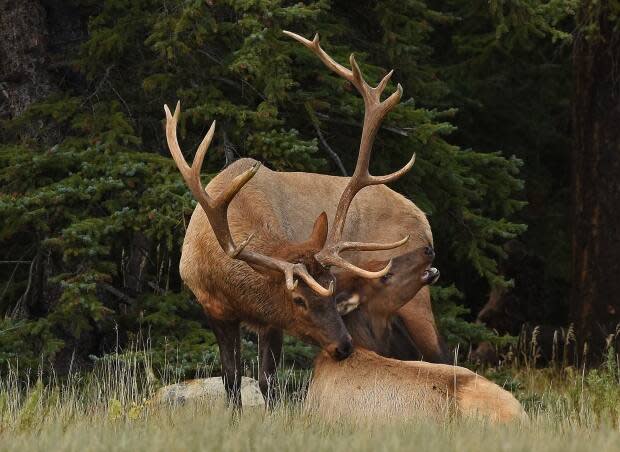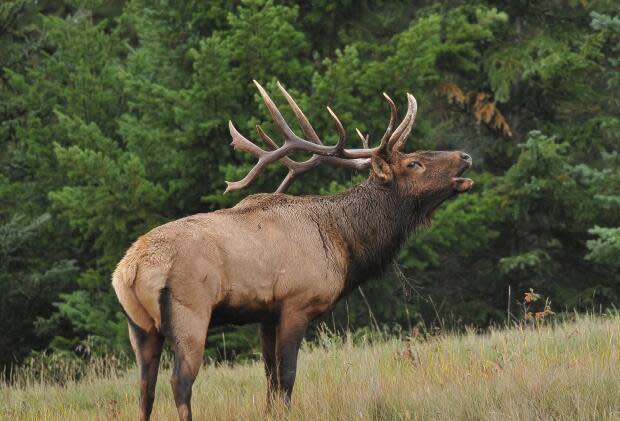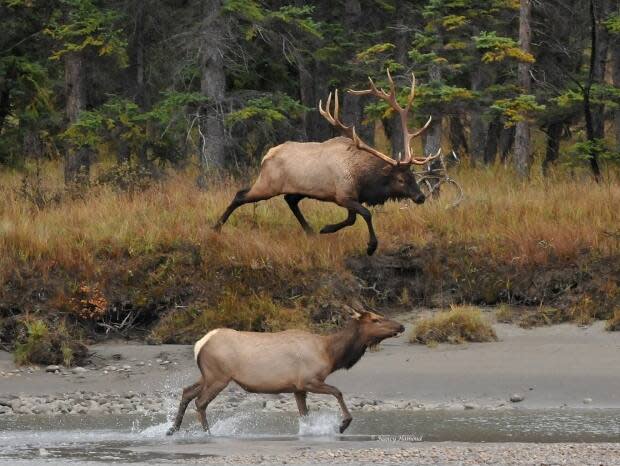How to safely experience elk mating rituals (from a distance)

It's that magical time of year when boy elk try to hook up with girl elk, so they can make more elk, a Calgary naturalist explains.
"Sometime in the next month I would highly recommend people head out to elk country, and just listen and watch for these animals," Brian Keating told The Homestretch this week.
"It would make a great weekend objective to hear that call."
And Keating knows whereof he speaks. He experienced first hand the mystical sounds of elk bulls communicating with each other near Banff, Alta., last weekend.
"It sounded like what I would imagine a duck-billed dinosaur would have sounded like. It is absolutely otherworldly."
It's become almost an annual tradition.

"It's the beginning of the mating season and I suspect the elk we heard were some of the first to arrive in anticipation of a good fall rut [mating season]," he said.
But until there's Tinder for elk, the boys have to get the attention of the girls with a shout-out, called a bugle.
"It's far too high to be produced by the elk's voice box, and it turns out there are two different forces at work. The bull is moving both his lips and his nostrils. He is roaring and whistling simultaneously. That's how they produce the famous elk bugle," Keating said.
The pitch of the bull's bugle has meaning, Keating says of the research.
"The deeper and the louder the sound, the larger the animal. A lesser bull off in the distance, can determine the risk or energy output to challenge a bigger bull without having to confront it," he said.
So sound is part of it, but so it size.

"Antlers are an indication of age so the older the animal is, chances are their body reserves will allow them to build larger antlers. The older the male, the better he is at finding food, escaping predators, enjoying a low parasite load, and he probably has high quality genes," Keating said.
"Everything a female is looking for."
She's also counting, it would seem.
"Scientists have figured out that when a female elk is presented with a choice between a bull with nine antler points or tines and another bull with 10, she almost always selects the bull with 10 points. She is paying attention."
But to experience elk, keep your distance. Seriously.
"Parks Canada says stay at least 30 metres (100 feet) away, and I would suggest maybe even a little further this time of year. A bull can be 700 pounds (320 kilograms) and spin on a dime. Don't try to get a selfie, use a long lens."
For more fascinating stories about Alberta's wildlife from naturalist Brian Keating, visit his website and check out these stories:
With files from The Homestretch.

 Yahoo Movies
Yahoo Movies 